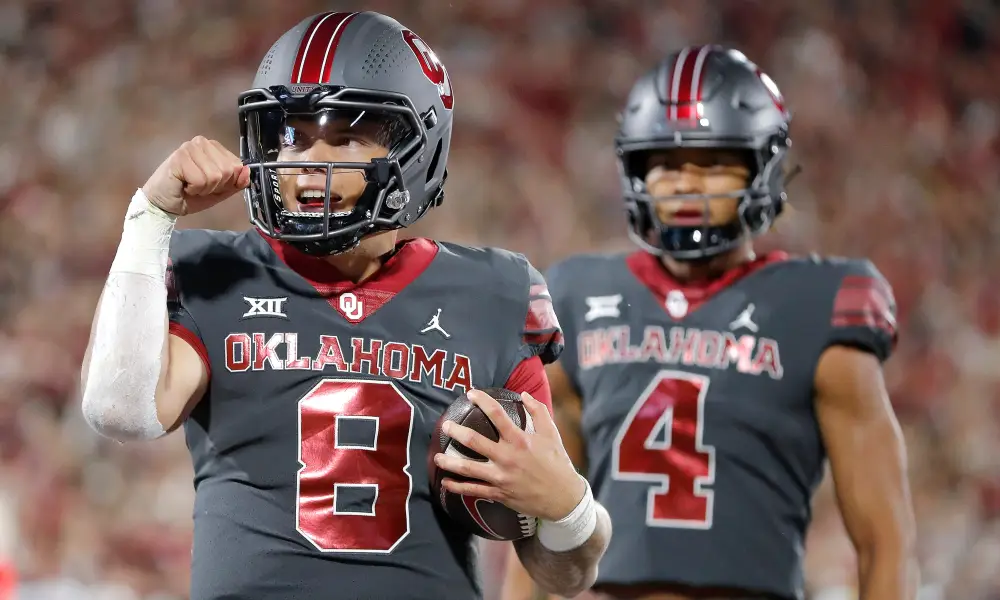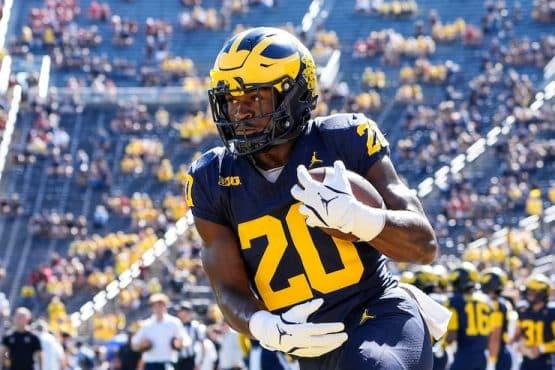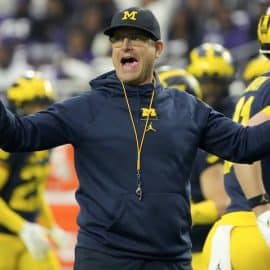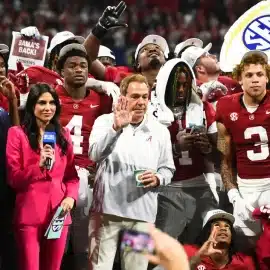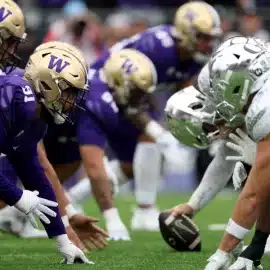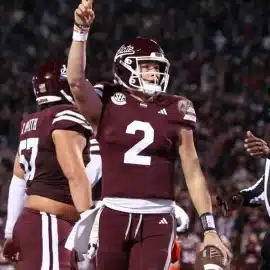Due to the combination of several factors, the college football recruiting calendar is broken and chaotic, and it’s having an impact on every aspect of college football and college sports in general.
Right now is the craziest time of the college football calendar. It is pure pandemonium if you’re a die-hard fan trying to keep tabs on your team. Before the transfer portal and early signing day, all you had to do was read the speculation of who your school was recruiting and then wait for the traditional signing day around the beginning of February. And this made sense. The season was completed for everyone, so everyone is starting to build next season’s roster.
But now that we have an early signing period and the transfer portal, fans are trying to figure out which players are leaving their school, which players are transferring into their school, which big-time recruits they may sign during the early signing period (late December in the middle of bowl season), who they may lose to the NFL draft, all while trying to understand who is going to play in their bowl game if their favorite school didn’t make the playoffs. It’s chaotic. So, how did we get here, and is it fixable?
The Transfer Portal, NIL Money, & Grad Transfers
The transfer portal is no doubt what is putting the college football recruiting and signing schedule over the top. The Transfer Portal rule was put in place in October 2018. The idea was to create transparency so that all teams could see all of the players who wanted to transfer to a new school under the new transfer rules. But what it did is create free agency in college sports, where student-athletes are all looking to go to bigger programs, get more playing time, or earn more NIL money, which has added more gasoline to this massive fire of chaos.
NIL (name, image, and likeness) allows players to profit from the use of their personal brands, something that was necessary for big-time college athletics as corporations, universities, and conferences have long been profiting by promoting their top-tier yet unpaid athletes. Universities started fundraising to be able to pay players a NIL deal by creating NIL collectives that would lean on the network of their alumni and corporate partners to raise money to get more NIL opportunities for their student-athletes. But the reality of that is it made the transfer portal a free agent pool where the majority of what is offered is money, and players are looking to cash in, as they should.
On top of this is the Grad Transfer Rule, which allows players a free transfer after graduation if they have a year of eligibility left. Almost all of them do because they were granted an extra year of eligibility due to the COVID-19 rule. This means that the majority of seniors who do not go on to play professionally look to transfer to another institution, not only to play more but also to cash in on some NIL money.
The Aftermath
And now due to all of that, we’re left with a bowl season that seemingly features a portion of teams’ marquee players from the regular season. Some are opting out to prepare for the NFL draft, as has been the trend for some years now. But you have others leaving in the transfer portal. you have coaches who are accepting jobs before their teams’ bowl game, which I hate, and you have seniors who are not playing because they just signed on for one more year at another institution. It’s made bowl season a nightmare. Teams playing in the bowl games are a shell of themselves.
And imagine how hectic it is to be recruiting nowadays. First and foremost, you kind of have to measure which of your players may enter the transfer portal, and try and re-recruit them to stay. Then you are also putting out feelers to find out who you may want from other schools in the transfer portal, and see what you can offer them for an NIL package to bring them in for the following season. And lastly, you’re still recruiting the top high school players in the country as you try to get them to sign for the early signing period.
It’s brutal.
The Transfer Portal has officially killed the buzz of Bowl Season @mostlysports pic.twitter.com/U7MoUTKoMz
— Barstool Sports (@barstoolsports) December 18, 2023
The Constant Impact Of Mass Transfers
You also wonder how this impacts high school recruiting in general. Take for instance a school like Notre Dame. Last year they added star Wake Forest grad transfer QB Sam Hartman. It was just announced they have also added star Duke grad transfer QB Riley Leonard for next season. What does that do to a high school recruit who is prepping to sign with Notre Dame as a QB? Does that scare you because you’re afraid they may just add the top grad-transfer QB in the country as they have the past two years which takes away your playing time? What if you signed with ND in 2023 and were told you could compete for the job as a true freshman? How do you compete with a guy they just signed out of free agency?
This is the consideration for all high school players looking at all programs. And it’s also the consideration for players already in a program working to earn a starting role. You could work for two years to earn a starting role just to have your university throw some NIL money at an established player from a top institution, and you’re out of a job. This is also promoting more transfers. And around and around we go.
“Something is being lost in this. You’re missing the tradition… It’s a weird feeling, a weird vibe.”
— @jasonrmcintyre discusses impact of the transfer portal on CFB pic.twitter.com/5FZ26qnqXj
— Herd w/Colin Cowherd (@TheHerd) December 13, 2023
The Impact On Group Of Five Schools
It used to be that the group of five schools had only one way to compete with the big boys at all. They had to find overlooked talent, sign them, and develop them exceptionally well. And some coaches were very good at this. And the coaches would be rewarded by receiving higher-paying jobs at bigger Power Five schools. But now, the players can be rewarded, which makes it challenging to build a culture and a winning program when bigger programs poach your best players.
So, I think group of five coaches are going to have to lean into the new ecosystem and figure out how they fit in. And I think they fit in as a feeder program to these bigger schools. Connect to these bigger schools and develop players so they can transfer in the future. I will write a much longer article on this exact topic, but that is where we are headed.
The Current College Football Recruiting Calendar
- August 1 – 31 – Dead Period (no high school recruiting contact)
- Sept 1 – Nov 26 – Official Evaluation Period (NCAA coaches and recruiters can talk to anyone involved in the player’s life like coaches or trainers but are not permitted to speak to the players or their families)
- Nov 27 – 30 – Dead Period
- Dec 1 – Conference Championship Weekend
- Dec 1 – 16 – Contact Period (In-person, off-campus recruiting allowed)
- Dec 17 – Quiet Period (only on-campus recruiting allowed – visits to campus)
- Dec 18 – Jan 11 – Dead
- Dec 20 – 22 – Early Signing Day (HS recruits can sign letters of intent to join programs. These are binding documents)
- Jan 3 – 7 – Quiet Period for portal players (transfers can visit schools)
- Jan 8 – National Championship
- Jan 12 – Feb 3 – Contact Period
- Feb 4 – Quiet Period
- Feb 5 – March 3 – Dead Period
- Feb 7 – Traditional Signing Day
- March 4 – April 14 – Quiet (Next season’s recruitment starts)
- April 15 – May 25 – Contact Period
- May 26 – 29 – Dead Period
- May 30 – June 23 – Quiet Period
- June 24 – July 24 – Dead Period
- July 25 – 31 – Quiet Period
How Does It Get Fixed?
Well, I don’t really know. But something is going to have to change. First, get rid of the early signing period. It’s solving a problem that no longer exists and is creating way more on its own. Go back to one national signing day and make it later in February, after the National Championship. I’d also have it after the transfer portal opens and closes, but I think you need to back the transfer portal up as well. I’m not sure if this would get more players to play in their bowl games, or if we’ll need language in NIL deals or scholarship offers that incentivize players to play in their bowl games, but watching teams that are missing a large portion of their quality players for bowl games is good for no one. So, allow current college players a one-month window to enter the portal and sign with their new school. After their full season is complete but before National Signing Day. Is it perfect, no? It’s still very close to signing day which may impact the thoughts and feelings of those HS recruits on where they want to go. But it does give them time. It’s better than the chaos of the portal and the early signing period being simultaneous.
This is what a less chaotic calendar would look like that wouldn’t obliterate a roster for teams not in the playoffs. I’m fully aware that someone who works in administration or who has to do the paperwork for all these transactions may be able to poke holes in my suggestions, but for now, I’m just going with what makes sense on paper to start.
Proposed New College Football Transfer Portal & Recruiting Calendar
- August – Dead Period
- September-November – Evaluation
- December – Contact/Quiet
- January 1 – February 9 – Quiet
- January 12th – National Championship
- January 13th – Transfer Portal Officially Opens
- February 13th – Transfer Portal Officially Closes
- February 14th – Contact With HS Recruits
- February 20 – Quiet Period
- February 21 – March 21 – Dead Period
- February 22 – National Signing Day
- March 10 – Spring Ball Begins
Again, is it perfect? No, it’s not. It’s tight and makes for a wild January to March. But I think it’s significantly better than the calendar we’re currently going through right now. It will allow players to at least finish their season in its entirety, and I think they should. I also think coaches should as well, but that’s an entirely different convo. It will also allow HS players to allow all of the transfer portal dust to settle before they make their decision on where they would like to attend.
So while it’s probably not a final solution, it’s a start. Because this is pandemonium and this system with its new rules needs an overhaul.
Add The Sports Daily to your Google News Feed!
